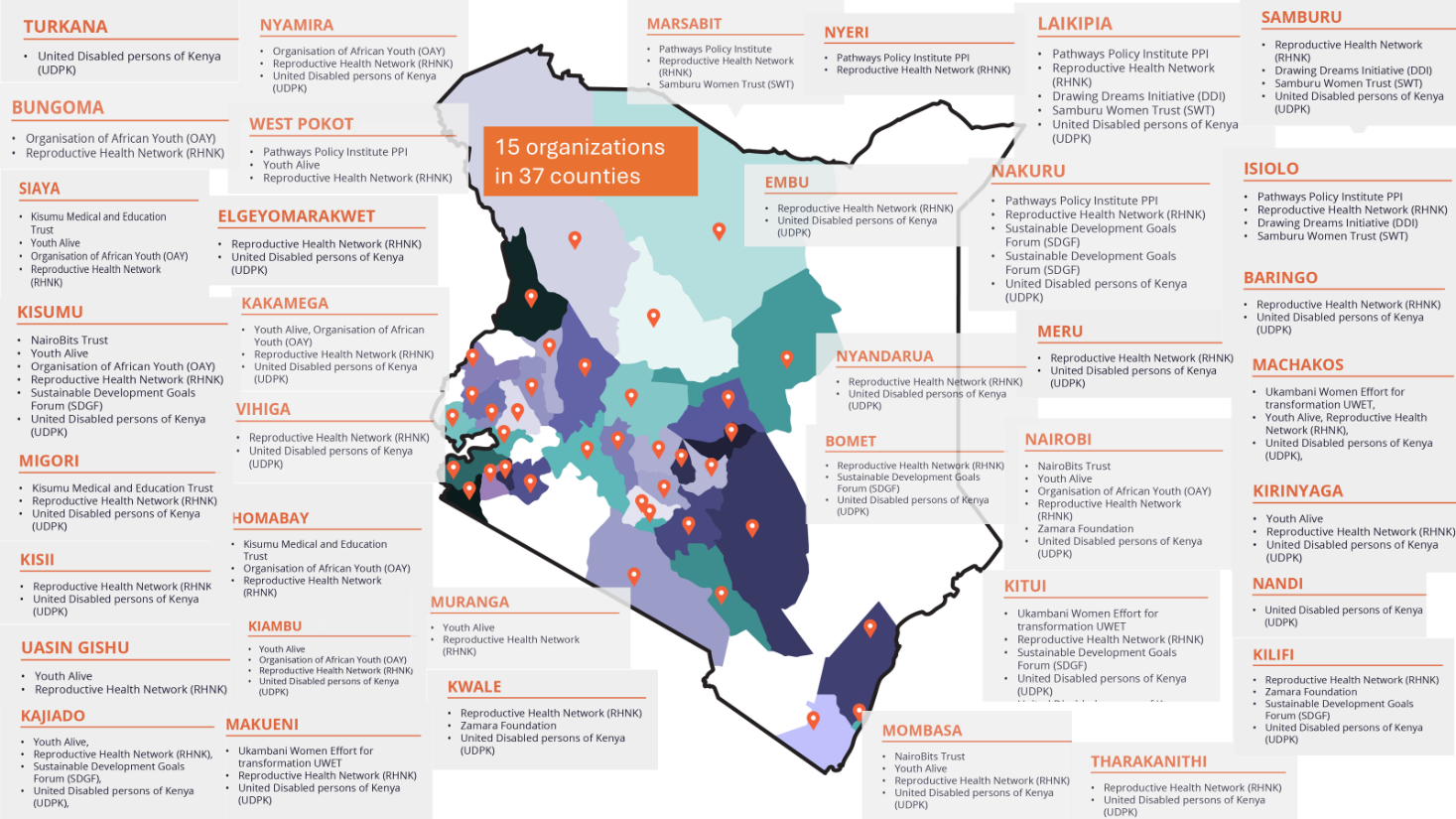
Capacity for Public Expenditure Tracking
KenyaThematic Area:
FP, MNH
Location:
Kenya
Partner:
Jhpiego
Timeline:
2022 - 2024
Donor:
UNFPA
Capacity for Public Expenditure Tracking
Goal
TAAC in Kenya first contracted health economists from the University of Nairobi to undertake a comprehensive review of the public health financing system and status for the first half of the 2020/2021 fiscal year, involving national budget health allocations to all 47 counties, National Treasury disbursements to counties, county budget allocations for health, with additional efforts to tracking county level stocks and expenditures on family planning and maternal and newborn health commodities. Using this information, TAAC oriented 15 civil society organizations on the budget cycles and key opportunities to intervene to ensure increased and more robust FP and MNH budgets within the county budgets, using SMART advocacy strategies.
Focus:
Accountability/Domestic Resource Mobilization
Key results:
This short-duration project aimed primarily to prepare collaborative members to lead their own independent advocacy initiatives in various counties. Key results within the project included:
- Contracting with health economists and compilation of detailed public financing report.
- Presentation of report findings to TAAC members as part of SMART Advocacy workshop and strategy co-creation with 15 civil society organizations to follow public expenditures at county levels
- Independent efforts of TAAC members in various countries, some of whom could apply these approaches in counties where they had other ongoing projects (such as this example) from Pathways Policy Institute in Laikipia, Nyeri and Nakuru counties. Over time and after the end of donor support for TAAC, these partners were able to generate results in terms of increased county allocations for health, including family planning, as seen in this PPI report.
Implications:
The Kenya project, as the first to use a TAAC model, helped to generate many important lessons for additional countries. As noted by an advocate for Zamara Foundation, “Knowledge on entry points in the budget making process will help CSOs strategically place themselves in influencing budget allocation for FP supplies.” As this quote demonstrates, equipping advocates with detailed landscaping information and data on budget processes and timelines proved very useful to help them engage effectively with government financing decision-makers. In decentralized governments, casting a wide net for civil society actors working at county or subnational level ensured cost-effective and rapid scale up of budget advocacy.
Click to image to zoom in





